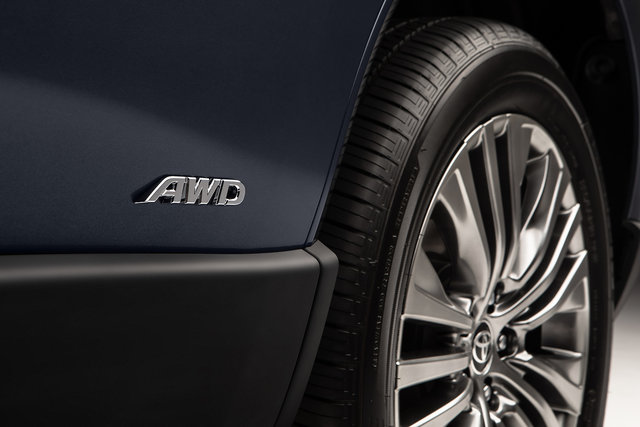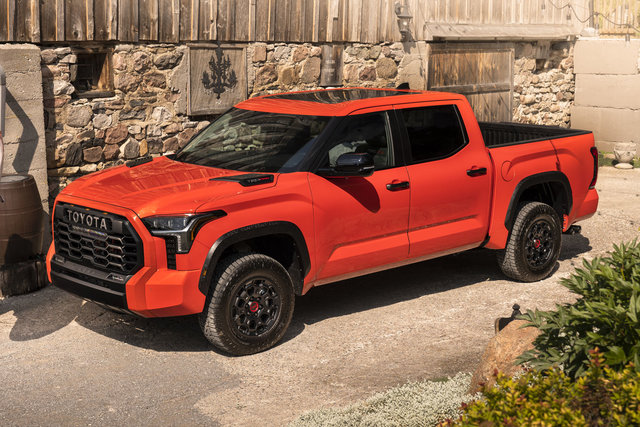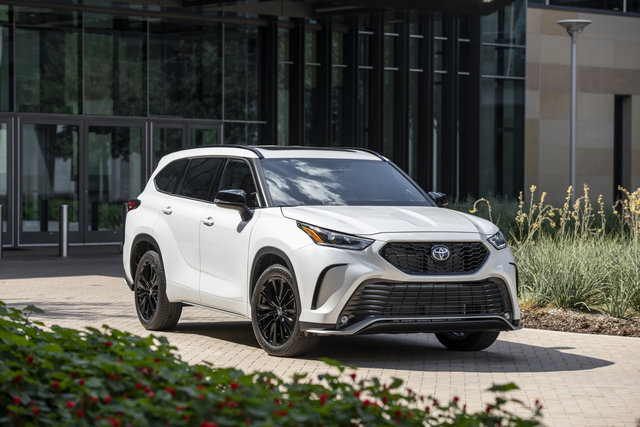If you're shopping for an affordable AWD compact SUV in Belleville, you've likely noticed RAV4...

Over the years, Toyota has dramatically increased the number of models offered with all-wheel drive. The latter, for example, is even found on vehicles such as the Avalon sedan and the Prius hybrid.
Given Toyota’s wide vehicle lineup, there are multiple systems that adapt to the type of vehicle. You don’t need the same AWD system on a Sienna as you do on, say, a 4Runner.
Basically, there are four types of approaches. The Dynamic Torque Control system is used on sedans and small SUVs, while the more powerful Dynamic Torque Vectoring system with driveline disconnect is more common on larger SUVs and pickup trucks. On-demand electronic systems (AWD and AWDe) are used on hybrid vehicles.
Each system uses sensors and computers to sense current road conditions to apply additional traction if needed. Each system does so in a different way, however.
Dynamic Torque Control (DTC)
This system uses an electromagnetic coupling system of the rear differential to engage and disengage the AWD system. When the sensors and computer detect that a tire is slipping (or spinning), they gently apply the brakes to the tire. This has the effect of equalizing traction on all wheels and helps preserve momentum towards the front of the vehicle. This system does not regulate the power transmitted to each wheel. With this system, the driveshaft that powers the entire system still rotates, even if the electromagnetic coupler is disengaged.
Dynamic Torque Vectoring (DTV)
This system uses multiple clutches to engage the AWD system behind the drivetrain, in front of the rear differential, and at each rear tire. This allows the system to distribute engine power to each wheel, as opposed to using selective braking like the DTC system. The DTV works by sensing a wheel's slip and disengaging the clutch on that wheel. It then applies the extra power to the other wheels that are not spinning to preserve forward momentum. This system also allows the driveshaft to be fully disengaged when all-wheel drive is not operating. This means that the driveshaft is not constantly rotating.
Electronic system on request
The electronic on demand system is present on certain Toyota hybrid vehicles (RAV4 and Highlander). This completely removes the drive shafts, replacing them with electrically powered generators for the rear tires. There is therefore no mechanical connection between the front and rear wheels. When additional traction is not needed, the rear wheel motors are disabled. On the other hand, when additional traction is required, the rear tire motors are activated and distribute the necessary power to each tire.
AWDe
With the Prius, we get a separate system. The AWDe device is configured to maximize fuel efficiency and minimize weight and drag. It works the same as the electronic on-demand system, with a few exceptions. For starters, the rear motors are induction, and they are only available at speeds below 70 km/h. This helps prevent the all-wheel drive motors from burning out. The AWDe system is also engaged up to 10 km/h when the vehicle is accelerating. This is because electric motors work more efficiently than gasoline engines at low speeds. This helps reduce emissions and fuel consumption. If the system detects that traction is needed above 10 km/h, it remains engaged up to 70 km/h. It will disengage if road conditions are clear.
Lastly, the lineup’s more rugged models, like the Toyota 4Runner, Sequoia, Tundra, and Tacoma have their own 4x4 system with centre lock differential.
Other Articles That May Interest You
Towing a boat to Sandbanks Provincial Park or hauling a camper through Picton's winding roads...
Advanced driver assistance systems have moved from luxury-car exclusives to standard equipment on...





